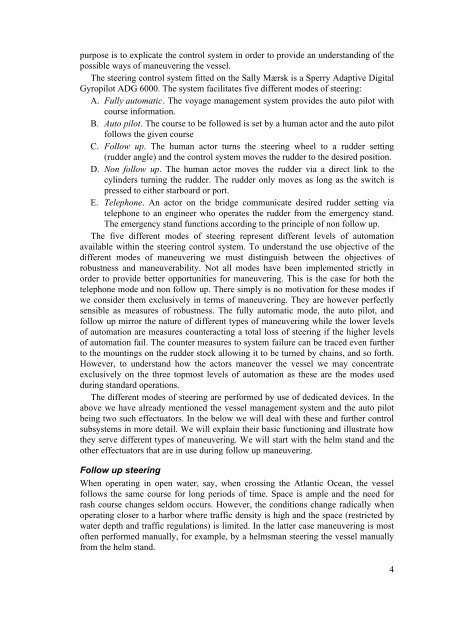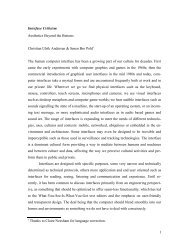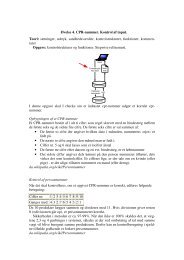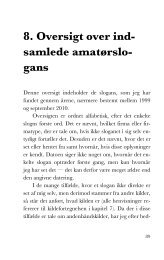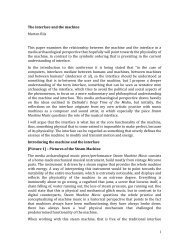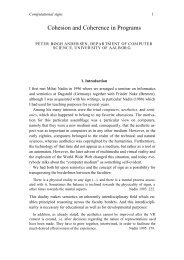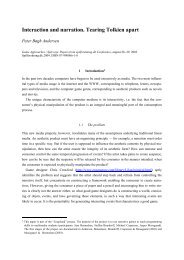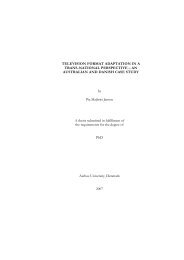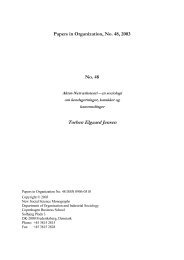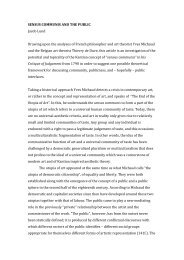Create successful ePaper yourself
Turn your PDF publications into a flip-book with our unique Google optimized e-Paper software.
purpose is to explicate <strong>the</strong> control system in order to provide an understanding of <strong>the</strong>possible ways of maneuvering <strong>the</strong> vessel.The steering control system fitted on <strong>the</strong> <strong>Sally</strong> Mærsk is a Sperry Adaptive DigitalGyropilot ADG 6000. The system facilitates five different modes of steering:A. Fully automatic. The voyage management system provides <strong>the</strong> auto pilot withcourse information.B. Auto pilot. The course to be followed is set by a human actor and <strong>the</strong> auto pilotfollows <strong>the</strong> given courseC. Follow up. The human actor turns <strong>the</strong> steering wheel to a rudder setting(rudder angle) and <strong>the</strong> control system moves <strong>the</strong> rudder to <strong>the</strong> desired position.D. Non follow up. The human actor moves <strong>the</strong> rudder via a direct link to <strong>the</strong>cylinders turning <strong>the</strong> rudder. The rudder only moves as long as <strong>the</strong> switch ispressed to ei<strong>the</strong>r starboard or port.E. Telephone. An actor on <strong>the</strong> bridge communicate desired rudder setting viatelephone to an engineer who operates <strong>the</strong> rudder from <strong>the</strong> emergency stand.The emergency stand functions according to <strong>the</strong> principle of non follow up.The five different modes of steering represent different levels of automationavailable within <strong>the</strong> steering control system. To understand <strong>the</strong> use objective of <strong>the</strong>different modes of maneuvering we must distinguish between <strong>the</strong> objectives ofrobustness and maneuverability. Not all modes have been implemented strictly inorder to provide better opportunities for maneuvering. This is <strong>the</strong> case for both <strong>the</strong>telephone mode and non follow up. There simply is no motivation for <strong>the</strong>se modes ifwe consider <strong>the</strong>m exclusively in terms of maneuvering. They are however perfectlysensible as measures of robustness. The fully automatic mode, <strong>the</strong> auto pilot, andfollow up mirror <strong>the</strong> nature of different types of maneuvering while <strong>the</strong> lower levelsof automation are measures counteracting a total loss of steering if <strong>the</strong> higher levelsof automation fail. The counter measures to system failure can be traced even fur<strong>the</strong>rto <strong>the</strong> mountings on <strong>the</strong> rudder stock allowing it to be turned by chains, and so forth.However, to understand how <strong>the</strong> actors maneuver <strong>the</strong> vessel we may concentrateexclusively on <strong>the</strong> three topmost levels of automation as <strong>the</strong>se are <strong>the</strong> modes usedduring standard operations.The different modes of steering are performed by use of dedicated devices. In <strong>the</strong>above we have already mentioned <strong>the</strong> vessel management system and <strong>the</strong> auto pilotbeing two such effectuators. In <strong>the</strong> below we will deal with <strong>the</strong>se and fur<strong>the</strong>r controlsubsystems in more detail. We will explain <strong>the</strong>ir basic functioning and illustrate how<strong>the</strong>y serve different types of maneuvering. We will start with <strong>the</strong> helm stand and <strong>the</strong>o<strong>the</strong>r effectuators that are in use during follow up maneuvering.Follow up steeringWhen operating in open water, say, when crossing <strong>the</strong> Atlantic Ocean, <strong>the</strong> vesselfollows <strong>the</strong> same course for long periods of time. Space is ample and <strong>the</strong> need forrash course changes seldom occurs. However, <strong>the</strong> conditions change radically whenoperating closer to a harbor where traffic density is high and <strong>the</strong> space (restricted bywater depth and traffic regulations) is limited. In <strong>the</strong> latter case maneuvering is mostoften performed manually, for example, by a helmsman steering <strong>the</strong> vessel manuallyfrom <strong>the</strong> helm stand.4


